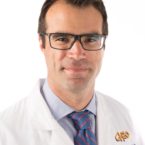Abstract
➤: Patellar instability represents a common problem with an evolving understanding and multifactorial pathoetiology. Treatment plans should be based on the identification of contributing anatomical factors and tailored to each individual patient.
➤: Risks for recurrent instability are dependent on several patient-specific factors including patella alta, increased tibial tubercle-to-trochlear groove (TT-TG) distance, trochlear dysplasia, younger skeletal age, and ligamentous laxity.
➤: Cartilage or osteochondral lesions and/or fractures are commonly observed in first-time patellar dislocation, and magnetic resonance imaging (MRI) should be strongly considered. Advanced imaging modalities, such as computed tomography (CT) or MRI, should also be obtained preoperatively to identify predisposing factors and guide surgical treatment.
➤: Medial patellofemoral ligament (MPFL) reconstruction with anatomical femoral tunnel positioning is associated with lower recurrence rates compared with MPFL repair and has become a common and successful reconstructive surgical option in cases of instability.
➤: Lateral retinacular tightness can be addressed with lateral retinacular release or lengthening, but these procedures should not be performed in isolation.
➤: Tibial tubercle osteotomy is a powerful reconstructive tool in the setting of underlying skeletal risk factors for instability and can be of particular benefit in the presence of increased TT-TG distance (>20 mm), and/or in the setting of patella alta.
➤: The indications for trochleoplasty are still developing along with the clinical evidence, but trochleoplasty may be indicated in some cases of severe trochlear dysplasia. Several surgical techniques have indications in specific clinical scenarios and populations, and indications, risks, and benefits to each are progressing with our understanding.
➤: Combined femoral derotational osteotomy and MPFL reconstruction can be considered for patients with a femoral anteversion angle of >30° to improve patient outcomes and reduce recurrence rates.
Area of Research: Joints and orthopedics
Researchers
-
Sasha Carsen
Scientist, CHEO Research Institute

